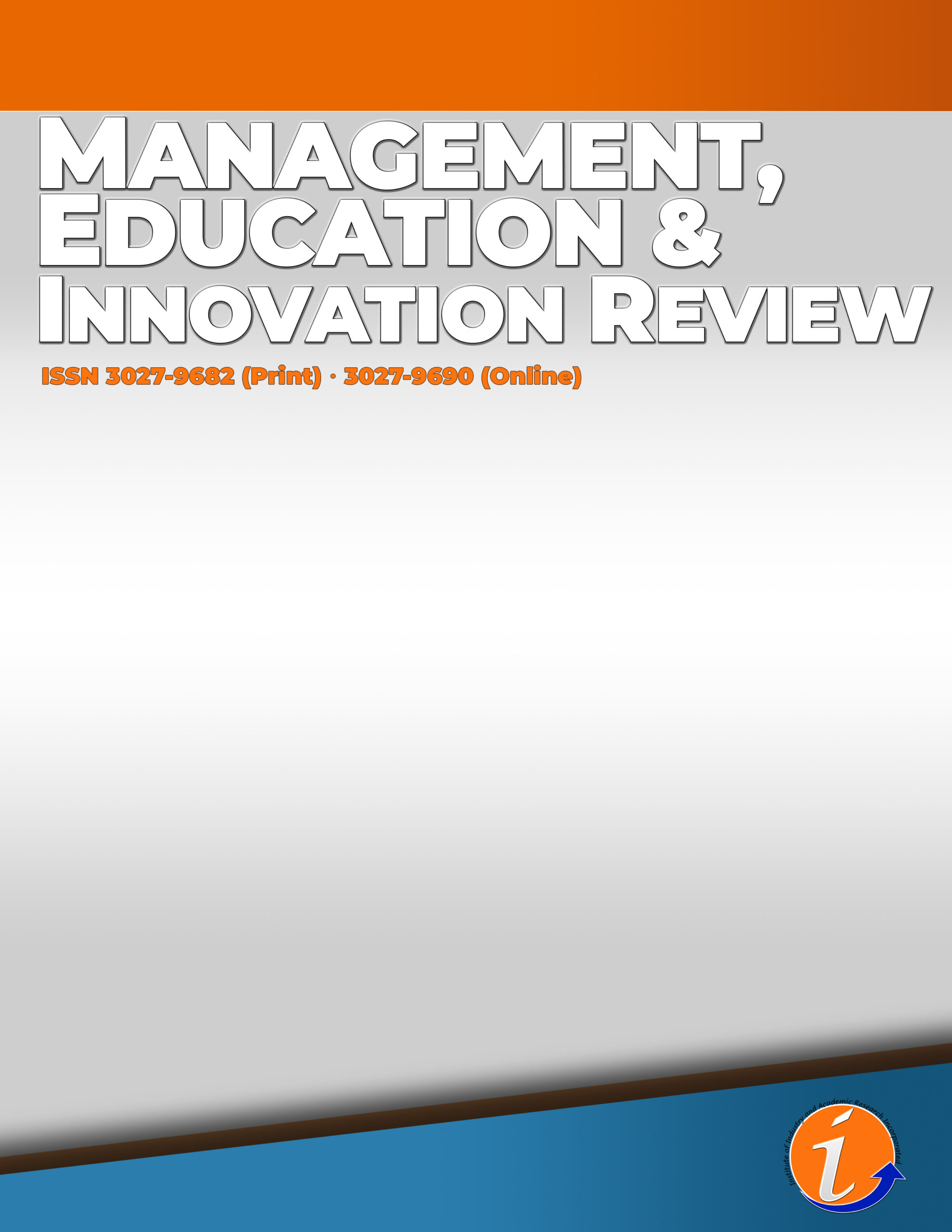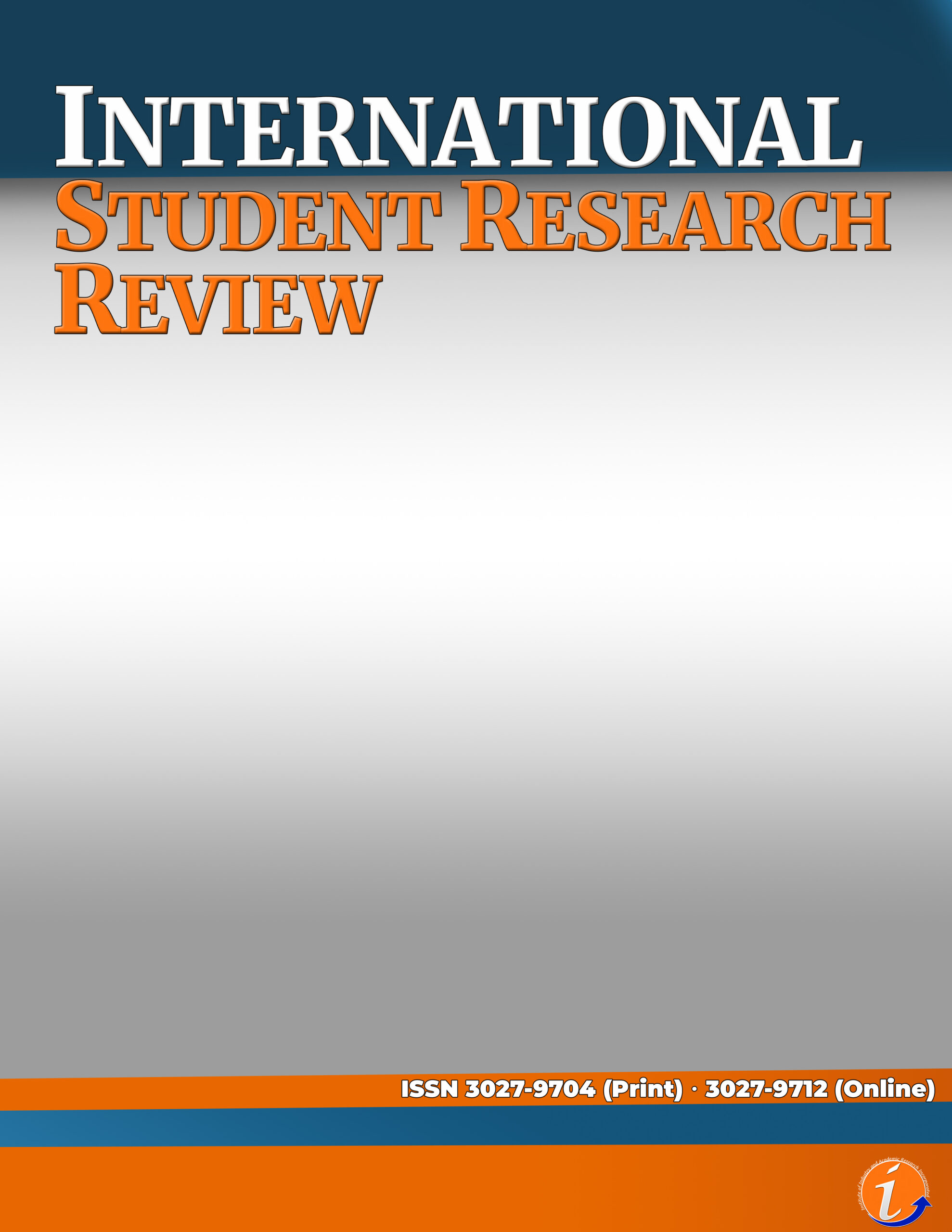Abstract
This qualitative phenomenological study explored the phenomenon on the separation anxiety among kindergarten pupils. The study revealed two (2) generated major themes with seven (7) subthemes that emerged during several interviews and focus group discussions (FGD) with the research participants. The causes of separation anxiety was considered the first major theme with three (3) subthemes: (a) stress, (b) new environment, and (c) overprotected parents. The display of separation anxiety was the second major theme that emerged with four (4) subthemes: (a) crying, (b) clinginess, (c) shyness, and (d) silence. The study further revealed one (1) major theme emerged with three (3) subthemes. The separation anxiety’s intrusiveness was the major theme that emerged with three (3) subthemes: (a) parents hampered daily routine activities, (b) teachers’ disruptive school-related activities, and (c) agent for pupil’s behavioral change. In terms of the coping mechanisms of parents and kindergarten teachers concerning the separation anxiety among kindergarten pupils, the results showed that there was one (1) major theme and three (3) subthemes. The fostering dialogue was the generated major theme and the subthemes are: (a) validate their feelings, (b) do not sneak out, and (c) clear communication. Parents and teachers should be vigilant in monitoring and should address children who exhibit signs of separation anxiety so that they may be treated as early and effectively as possible.
Keywords: Separation Anxiety, Kindergarten Learners, Lived Experiences of Parents, Lived Experiences of Teachers
*This paper is presented at the 4th International Conference on Multidisciplinary Industry and Academic Research (ICMIAR) 2023
References
Alampay, J. (2017). Parent Sci Pract. Retrieved September 1, 2021, from www.ncbi.nlm.nih.gov:https://www.ncbi.nlm.nih.gov/pmc/articles/PMC3150789/
American Psychiatric Association (2000). Diagnostic and statistical manual of mental disorders. 4. Washington, DC: APA Press; 2000. text rev. doi: 10.1901/jaba.2008.16-389
American Psychiatric Association (2013). Diagnostic and statistical manual of mental disorders (5th ed.). Arlington, VA: American Psychiatric Publishing. Retrieved from https://www.researchgate.net/publication/330410506
Annie (2019, January 17). Aimtalk-blog. Retrieved August 24, 2021, from www.aimtalkblog.com: https://aimtalkblog.com/2019/01/15/annies-note/filipinos-strong-family-ties/
Asan, A. (2013). Computer technology awareness by elementary school teachers: A case study from Turkey. Journal of Information Technology Education: Research, 2(1), 153-164. Retrieved from https://www.researchgate.net/publication/350276047
Baker, K. J. (2020). Schooling amid a pandemic. The National Teaching & Learning Forum, 29(4), p. 11. Wiley-Blackwell.
Bell-Dolan, D. (2015). Separation anxiety disorder. In: Ammerman RT, Hersen M, editors. Handbook of child behavior therapy in the psychiatric settings. New York: Wiley, pp. 217–298.
Biederman, J., Petty, C. R.-B., & Henin, A. (2017). Development Trajectories of anxiety Disorders in Offspring at risk for Panic Disorder and Major Depression. National Institutes of Health Psychiatry Res Public acces, 3153(2), 245-252. Retrieved from https://www.researchgate.net/publication/330410506
Bilich, K. (2018, July 22). Parents.com ParentsNetwork Meredith Corporation. Retrieved May 18, 2019, from Parents.com: https://www.parents/toddlers-preschoolers/starting-preschool/separationanxiety/overcoming-separation anxiety/
Boivin, M., & Bierman, K. L. (2014). School readiness: Introduction to a multifaceted and developmental construct. In M. Boivin, & K. L. Bierman (Eds.), Promoting school readiness and early learning: Implications of developmental research for practice (pp. 3–14). Guilford Press.
Boholano, H. B., Balo, V. T. M., Pogoy, A. M., & Alda, R. (2020). Technology-Enriched Teaching in Support of Quality Education in the 21st Century Skills. Solid State Technology, 63(5), 6795-6804.
Boyd, C.P., Kostanski, M., Gullone, E., Ollendick, TH., & Shek, DTL. (2012). Prevalence of anxiety and depression in Australian adolescents: Comparisons with worldwide data. Journal of Genetic Psychology,161, 479–492. doi: 10.1901/jaba.2008.16-389
Brown, C. P., Barry, D. P., & Ku, D. H. (2020). How Education Stakeholders Made Sense of School Readiness in and Beyond Kindergarten. Journal of Research in Childhood Education, 35(1), 122–142. doi:10.1080/02568543.2020.1717688
Brumariu, L., & Kerns, K.A. (2010). Mother-child attachment patterns and different types of anxiety symptoms: is there specificity of relations? Child Psychiatry and Human Development, 416, 663674. DOI: 10.5772/22672
Canady, V. A. (2020). APA stress report amid COVID‐19 points to parental challenges. Mental Health Weekly, 30(22), 3-4.
Carpenter, D. R. (2007). Phenomenology as method. In H. J. Streubert & D. R. Carpenter (Eds.), Qualitative research in nursing: Advancing the humanistic imperative (pp. 7599). Philadelphia, PA: Lippincott.
Carpenter, A. L., Puliafico, A. C., M.S, K. S., Pincus, D., & Comer, J. (2014). Extending ParentChild Interaction Therapy for Early Childhood Internalizing Problems: New Advances for an Overlooked Population. Clin Child Fam Psychol Rev, 17, 340-356. Retrieved from https://www.researchgate.net/publication/330410506
Carter, N., Bryant-Lukosius, D., DiCenso, A., Blythe, J., & Neville, A. J. (2014). The Use of Triangulation in Qualitative Research. Oncology Nursing Forum, 41(5), 545–547. doi:10.1188/14.onf.545-547
Cartwright-Hatton, S., McNicol, K., & Doubleday E. (2016). Anxiety in a neglected population: Prevalence of anxiety disorders in pre-adolescent children. Clinical Psychology Review, 26, 817–833. doi: 10.1901/jaba.2008.16-389
Chan, Z. Y. C., Fung, Y., & Chien, W. (2013). Bracketing in phenomenology: Only undertaken in the data collection and analysis process. The Qualitative Report, 18(59), 1-9.
Cherry, K. (2022). What is attachment theory? The importance of early emotional bonds. Very Well Mind. https://www.verywellmind.com/what-is-attachment-theory-2795337
Creswell, J.W. (2013). Qualitative Inquiry & Research Design: Choosing Among the Five Approaches. Thousand Oaks, CA: SAGE Publications, Inc. (pp. 77-83)c
Collins, C., Ruppanner, L., Christin Landivar, L., & Scarborough, W. J. (2021). The Gendered Consequences of a Weak Infrastructure of Care: School Reopening Plans and Parents’ Employment During the COVID-19 Pandemic. Gender & Society, 35(2), 180-193.
Costello, EJ., Mustillo, S., Erklani, A., Keeler, G., & Angol, A. (2013). Prevalence and development of psychiatric disorders in childhood and adolescence. Archives of General Psychiatry, 60, 837–844. doi: 10.1901/jaba.2008.16-389
Cruz, L. R. (2017, April 18). Family Influences. Retrieved August 28, 2021, from www.files.ethz:https://www.files.ethz.ch/isn/101308/2001_10_Family_Influences_on.pdf
Danzig, A. P., Buffered, S. J., Dougherty, L. R., & Carlson, G. (2013). Longitudinal Associations Between Preschool Psychopathology and School-Age Peer Functioning. Child Pschiatry Hum Dev, 44, 621-632.
DepEd Order No. 029, s. 2021. School calendar and activities for school year 2021-2022. Department of Education. https://www.deped.gov.ph/2021/08/05/august-5-2021-do-029-s-2021-school-calendar-and-activities-for-school-year-2021-2022/
Department of Health (2018). Mental Health Program. Department of Health. Manila, Philippines: Sun Star
Dörfler, V., & Stierand, M. (2020). Bracketing: a phenomenological theory applied through transpersonal reflexivity. Journal of Organizational Change Management, ahead-of-print(ahead-of-print). doi:10.1108/jocm-12-2019-0393
DSM. (2013, February 7). Diagnostic Statistical Manual Fifth Edition. Retrieved August 23, 2021, from DSM Psychiatry: https://dsm.psychiatryonline.org/doi/book10.1176/appi.books.9780890425596
Essau, C.A., Conradt, J., & Petermann, F. (2014). Frequency, comorbidity, and psychosocial impairment of anxiety disorders in German adolescents. Journal of Anxiety Disorders, 14, 263–279. doi: 10.1901/jaba.2008.16-389
Frank, M., & Barzilai, A. (2016). Project-based technology: Instructional strategy for developing technological literacy, 18(1) Retrieved from https://www.researchgate.net/publication/350276047
Fritscher, L. (2020). What is separation anxiety? Very Well Mind. https://www.verywellmind.com/separation-anxiety-2671784
Gamboa, H. (2019). ASIAN JOURNAL MEDIA CENTER. Retrieved July 20, 2022, from https://www.asianjournal.com/magazines/unboxing-filipino-culture-close-family-ties-and-most-loveditems-in-a-balikbayan-box/
Giannakopoulos, G., Eirini, A., Dimitrakaki, C., Oikonomidou, & Despoina, P. L. (2014). Early Childhood educators’ perceptions of preschoolers’mental health problems: a qualitative analysis. Annals of General Psychiatry, 13, 1.
Goyola, J. E. (2019, January 14). Retrieved August 29, 2021, from https://medium.com/@janeellapangoyala/traditional-filipino-family-values-that-make-us-distinctamong-others-7a439fdfd28a
Graves, G. (2021). How to Spot and Treat Anxiety in Children. https://www.scholastic.com/parents/family-life/social-emotional-learning/social-skills-for-kids/how-to-spot-and-treat-anxiety-children.html
Halle, T. G., & Darling-Churchill, K. E. (2016). Review of measures of social and emotional development. Journal of Applied Development Psychology, 45, 8–18. doi:10.1016/j.appdev.2016.02.003
Houri, A. K., & Miller, F. G. (2019). A Systematic Review of Universal Screeners Used to Evaluate Social-Emotional and Behavioral Aspects of Kindergarten Readiness. Early Education and Development, 1–23. doi:10.1080/10409289.2019.1677132
Hurley, K. (2018, September 26). Vertical Health Websites. Retrieved May 4, 2019, from Generalized Anxiety Disorder( GAD)>Helping Kids with Anxiety:Strategies to Help Anxious Children> Separation Anxiety in Children: How to Help your Child with Separation Anxiety: https://www.psycom.net/separationanxiety-disorder-children/
Keough, K. L. & Eisen, A. R. (2022). Separation anxiety: Reference module in neuroscience and biobehavioral psychology. Elsevier, https://doi.org/10.1016/B978-0-323-91497-0.00098-9.
Koenig, R. (2019, April 18). parents.com. Retrieved April 18, 2019, from www.parents.com: https://www.parents.com/toddlers-preschoolers/starting-preschool/separation-anxiety/goodbye-withouttears/
Kossowsky, J., Pfaltz, M., Schneider, Taeymans, J., Locher, C., & Gaab, J. (2013). The Separation Anxiety hypothesis of Panic Disorder Revisited:A Meta- Analysis. Am J Psychiatry, 170, 768-781.
Lase, D., Zega, T. G. C., & Daeli, D. O. (2021). Parents’ perceptions of distance learning during Covid-19 pandemic in rural Indonesia. Journal of Education and Learning (EduLearn).
Lavallee, K. L., & Schneider, S. (2019). Separation Anxiety Disorder. Pediatric Anxiety Disorders, 151–176. doi:10.1016/b978-0-12-813004-9.00008-6
Levin, V. (2019, May 2). pre-kpages.com. Retrieved May 2, 2019, from Separation Anxiety in Preschool: https://www.pre-kpages.com/separation-anxiety-in-preschool/
Manassis, K., & Hood, J. (2018). Individual and familial predictors of impairment in childhood anxiety disorders. Journal of the American Academy of Child and Adolescent Psychiatry, 37428434. DOI: 10.5772/22672
Martinez, C. M. (2020, March 1). Filipino help-seeking for mental health problems and associated barriers and facilitators: A systematic Review. Retrieved September 4, 2021, from https://soc.psychiatry/psychiatric/55ss/olp/
McLoone, J., JenniferL., H., & Rapee, R. M. (2016). Treating Anxiety Disorders in a School Setting. Education & Treatment of Children Proquest Central, 219-242.
Mian, N. D. (2014). Little Children with Big Worries:Addressing the Needs of Young, anxious children and the problem of parent engagement. Clin Child Fam psycho Rev, 17, 85-96.
Mofrad, S., Abdullah, R., & Abu Samah, B. (2019). Perceived Parental Overprotection and Separation anxiety: Does specific parental Rearing serve as Specific Risk Facto. Asian Social Science, 5(11).
Pacholec, N. A., Tamas, M. E., Poggesi, R., Hoyman, L. C., Tabbarah, S., Thordarson, M., & Friedberg, R. D. (2013). “I Want My Mommy!” Assessment and Treatment Reccomendations for SeparationAnxiety Disorder. GSTFInternational journal of Law and Social Science, 124-129.
Pelaez, M., & Novak, G. (2020). Returning to School: Separation Problems and Anxiety in the Age of Pandemics. Behavior Analysis in Practice, 13(3), 521–526. doi:10.1007/s40617-020-00467-2
Pincus, D. B., Eyberg, S., & Choate, M. L. (2005). Adapting Parent-Child Interaction Therapy for Young Children with Separation Anxiety Disorder. Education and Treatment of Children Proquest Central, 28,2:163. Retrieved from https://www.researchgate.net/publication/330410506
Rapee, R.M. (2017). Potential role of childrearing practices in the development of anxiety and depression. Clinical Psychology Review, 1714767. DOI: 10.5772/22672
Republic Act No. 10157, s. 2012. Kindergarten Education Act of 2012. https://www.officialgazette.gov.ph/2012/01/20/republic-act-no-10157/
Republic of the Philippines’ Department of Education, “Policy Guidelines for the Provision of Learning Resources in the Implementation of the Basic Education Learning Continuity Plan,” 2020a. [Online]. Available: https://www.deped.gov.ph/wp-content/uploads/2020/08/DO_s2020_018.pdf.
Rimm K. S., & Sandilos, L. (2017). School transition and school readiness: An outcome of early childhood development. Updated July 2017. Encyclopedia on Early Childhood development [online]. CEECD, SKC-ECD. https://www.child-encyclopedia.com/sites/default/files/dossiers-complets/en/schoolreadiness.pdf.
Roza, SJ., Hofstra, MB., van der Ende, J., & Verhulst, FC. (2015). Stable prediction of mood and anxiety disorders based on behavioral and emotional problems in childhod: A 14-year follow-up during childhood, adolescence, and young adulthood. American Journal of Psychiatry, 160, 2116–2121. doi: 10.1901/jaba.2008.16-389
Shear, K., Jin, R., Ruscio, AM., Walters EE., & Kessler, RC. (2016). Prevalence and correlates of estimated DSM-IV child and adult separation anxiety disorder in the national comorbidity survey replication. American Journal of Psychiatry, 163,1074–1083.
Swanson, W. S. (2015, November 21). Mama Doc Medicine: Finding Calm and Confidence in Parenting, Child Health and Work-Life Balance. Retrieved May 17, 2019, from HealthyChildren.org:https://www.healthychildren.org/English/ages-stages/toddler/pages/Soothing-Your-Childs-SeparationAnxiety.aspx
United Nations (UN) (2020). “Policy Brief: Education during COVID-19 and beyond,” 2020. [Online]. Available: https://www.un.org/development/desa/dspd/wp-content/uploads/sites/22/2020/08/sg_policy_brief_covid19_and_education_august_2020.pdf.
Valiente, C., Doane, L. D., Clifford, S., Grimm, K. J., & Lemery-Chalfant, K. (2021). School readiness and achievement in early elementary school: Moderation by Students’ temperament. Journal of Applied Developmental Psychology, 74, 101265. doi:10.1016/j.appdev.2021.101265
Victor, A.M., Bernat, D.H., Bernstein, G.A., Layne, A.E., (2017). Effects of parent and family characteristics on treatment outcome of anxious children, Journal of Anxiety Disorders, 216835848. DOI: 10.5772/22672
Vole, M. (2021, October 7). Understanding clinginess in children. Go Student. https://insights.gostudent.org/en/understanding-clinginess-in-children
Warren, S.L., Huston, L., Egeland, B., & Sroufe, L.A. (2017). Child and adolescent anxiety disorders and early attachment. Journal of the American Academy of Child and Adolescent Psychiatry, 365(1997), 637644. DOI: 10.5772/22672
Wittchen, H., Nelson, CB., & Lachner, G. (2018). Prevalence of mental disorders and psychosocial impairments in adolescents and young adults. Psychological Medicine, 28,109–126. doi: 10.1901/jaba.2008.16-389
WHO. (2017). Mental Health of World Health Organization. Philippines: Inquirer.Xavier Méndez ,José P. Espada,Mireia Orgilés,Luis M. Llavona,José M. García-Fernández Published: July 29, 2014 https://doi.org/10.1371/journal.pone.0103212
Wood, J. J. (2016). Parental Introsiveness and Children’s Separation Anxiety in a Clinical Sample. Child Psychiatry Hum Dev, 37, 73-87.
Yılmaz, M., Sezerel, H., & Uzuner, Y. (2020). Sharing experiences and interpretation of experiences: a phenomenological research on Instagram influencers. Current Issues in Tourism, 1–8. doi:10.1080/13683500.2020.1763270
Ziv, Y., & Arbel, R. (2020). Parenting practices, aggressive response evaluation and decision, and social difficulties in kindergarten children: The role of fathers. Aggressive Behavior. doi:10.1002/ab.21932













